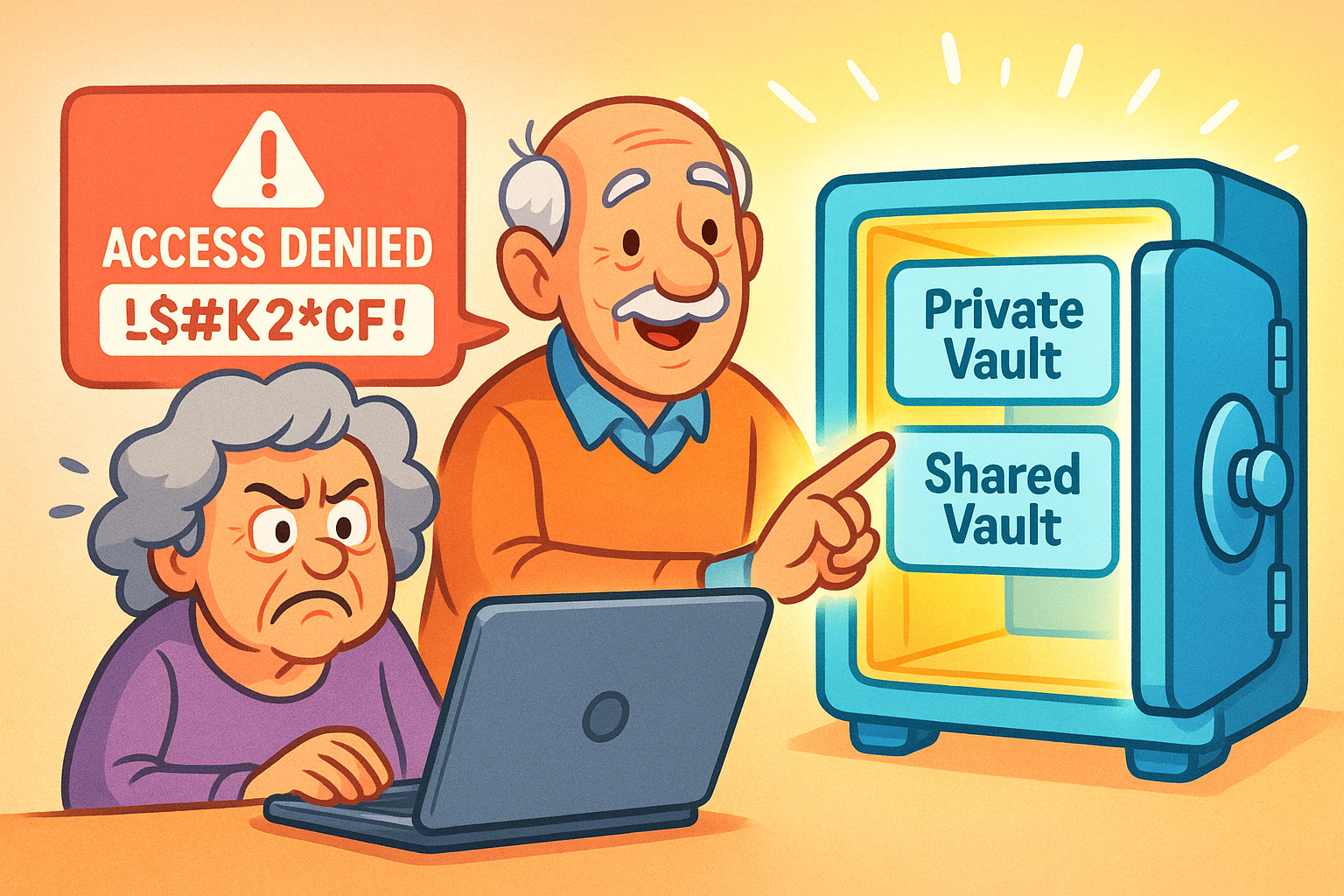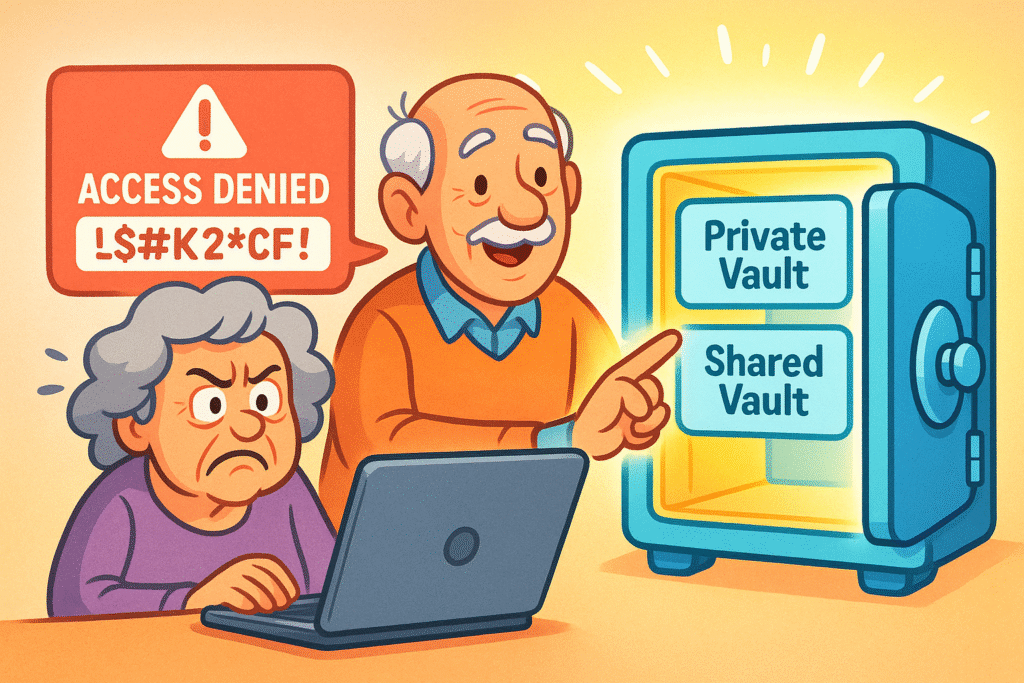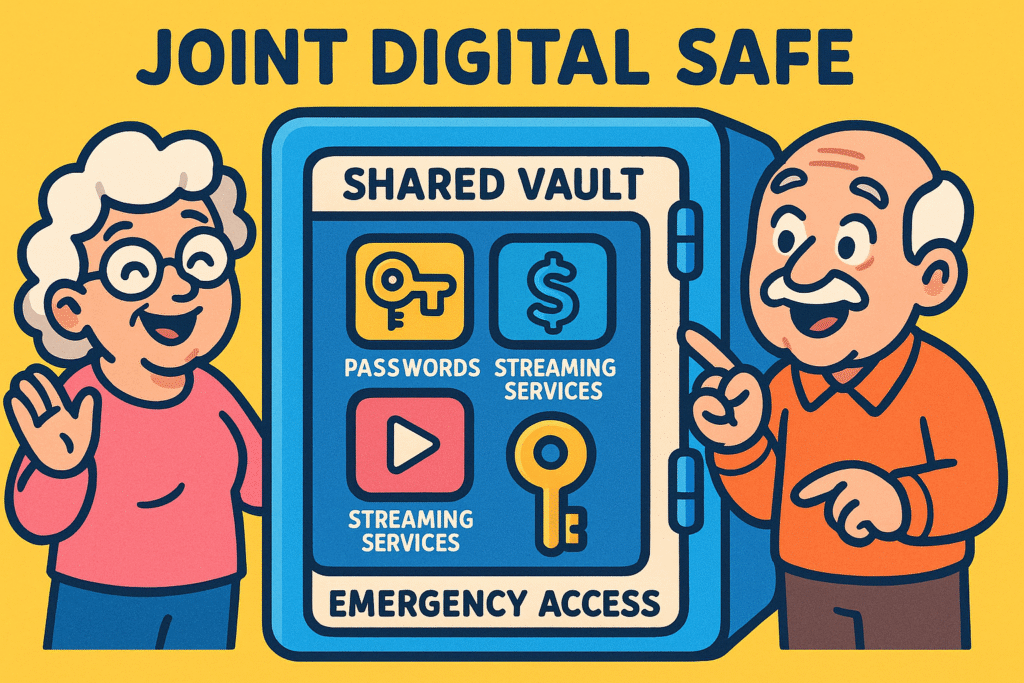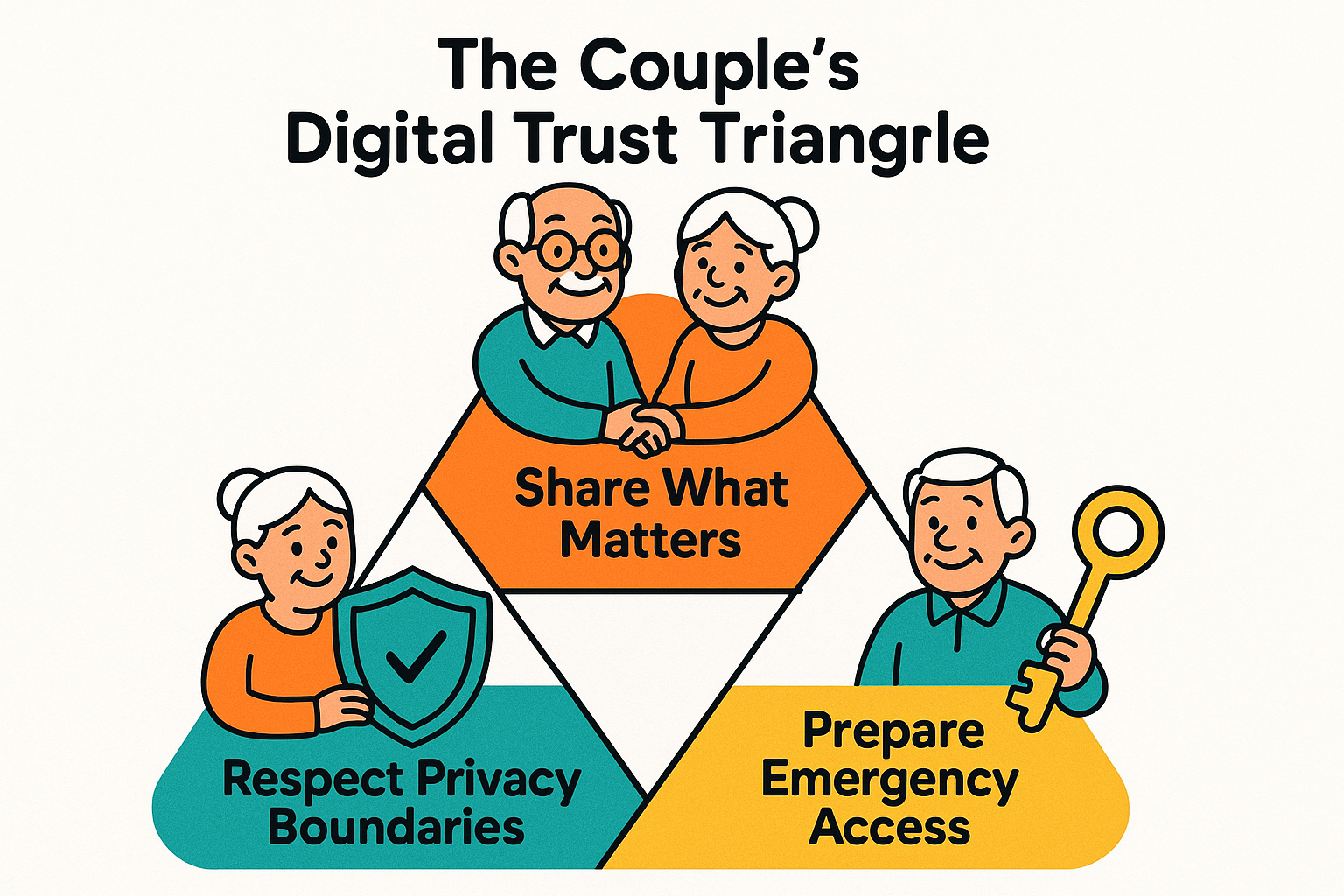
Newsletter Subscribe
Enter your email address below and subscribe to our newsletter


Have you and your partner ever played a game of digital charades? It usually starts with one of you trying to pay the electric bill online while the other is out playing bridge. You call them.
“Honey, what’s the passwordA password is a string of characters used to verify the identity of a user during the authentication... More for the power company?” you ask.
“Oh, it’s our anniversary, followed by the dog’s name, but with a capital letter and an exclamation point,” they say confidently.
You try June15Buddy!. Access Denied. You try June15buddy!. Access Denied. You try june15BUDDY!.
At this point, you’re considering just lighting candles. The dog, meanwhile, looks concerned that his good name is being dragged into this mess.
If this scene is uncomfortably familiar, you’re not alone. In today’s world, a partnership isn’t just about sharing a home; it’s about sharing a sprawling digital kingdom of joint accounts for everything from Netflix to the mortgage. Keeping track of it all can turn even the most harmonious couple into bickering password detectives.
But what if you could have a single, secure place for all those shared logins? A digital safe that both of you can access, but that keeps your personal accounts completely private. Welcome to the wonderful, relationship-saving world of password managers for two.
Before we dive in, let’s get one thing straight. Using a password manager together is not about sharing a single account and one master password. That’s like sharing one toothbrush—technically possible, but not recommended for long-term health and happiness.
Instead, think of a password manager “Family Plan” as a digital safe deposit box system. Each of you gets your own private box (a “vault”) where you keep your personal logins for email, social mediaSocial media refers to online platforms and websites that enable users to create, share, and interac... More, or that secret online forum for competitive birdwatchers. You each have your own unique key (a “master password”) to access your box.
But here’s the magic: you also get a shared safe deposit box. This is where you store the passwords for all the things you manage together: utilities, streamingStreaming refers to the process of transmitting or receiving multimedia content, such as audio, vide... More services, online banking, and the pharmacy portal. It’s the perfect blend of teamwork and privacy.

Most guides you’ll find online talk about password managers for “families.” But let’s be honest, the needs of two adults managing a household are different from a family trying to keep track of their teenager’s video game logins. You need a system built on mutual trust and clear boundaries, not just parental controls.
Ready to build your digital fortress for two? It’s easier than assembling Swedish furniture, I promise. Most popular password managers like 1Password, Proton Pass, LastPass, NordPass, and Bitwarden offer plans that are perfect for couples.
Here’s what to look for:
While the exact buttons might look a little different depending on which service you choose, the process is generally the same.
Using a shared password manager isn’t just a technical fix; it’s a new way of managing your digital life together. And like any part of a relationship, it works best with good communication and a little planning.
This is the perfect time to have a chat about digital boundaries. A shared password vault doesn’t mean you have to share everything. It’s perfectly healthy to keep your personal email, social media, and other individual accounts in your private vault.
The goal is transparency for shared responsibilities, not a total loss of privacy. Decide together what belongs in the shared vault (joint checking account, Netflix, Amazon Prime) and what doesn’t (your personal Facebook account).
This is one of the most important, and often overlooked, benefits of a couple’s password manager. What happens if one of you is in an accident or becomes ill and can’t communicate? How will the other person access the online banking portal to pay the mortgage or get into the insurance account?
This is where “Emergency Access” comes in. It’s a feature that lets you grant your partner permission to access your vault after a waiting period you define. It’s a digital “in case of emergency” plan that is just as vital as knowing how to use your phone’s built-in safety tools, like the iPhone emergency SOS feature. Setting this up provides immense peace of mind, ensuring that in a crisis, a forgotten password is the last thing you’ll have to worry about.

Nobody likes to think about it, but planning for a potential separation is a practical step. If a relationship ends, a password manager makes the digital disentanglement process much cleaner and more secure. You can simply revoke access to shared vaults and change the passwords for any accounts stored within them. It’s a far cry from the messy alternative of trying to remember every single account you once shared.
You could, but you shouldn’t. Sharing one master password means your partner has access to everything, and vice versa. It removes all privacy and makes it much harder to manage if you ever need to separate your digital lives.
Yes! Password managers use powerful encryptionEncryption is a way to protect sensitive data by turning it into unreadable code using complex math.... More (think of it as a military-grade digital scramble) to protect your data. It’s far safer than using sticky notes, a spreadsheet, or the same three passwords for everything, which is what most people do.
This is a common concern. The key is to start slow. Begin by setting up a shared vault with just one or two essential accounts, like your primary streaming service. As they get comfortable with the process of using the password manager to log in, you can gradually add more. Frame it as a tool to make their life easier, not more complicated.
This is the one password you absolutely cannot forget. However, most services have recovery options you can set up in advance. Make sure you both go through that process when you create your accounts.
Getting started with a password manager is one of the best things you can do for your digital security and your sanity as a couple. It replaces password-related stress with a system built on clarity, trust, and teamwork.
Your first step? Sit down together over a cup of coffee and have a chat. Talk about the accounts you share, the frustration of forgotten passwords, and the peace of mind that comes from knowing you have a plan. You’ll be amazed at how much simpler your shared digital life can be.